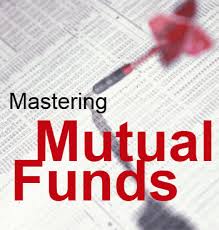
One of my favorites and easy ways to invest in the stock market is using Mutual Funds. for growing wealth. You can easily invest in a mutual fund to match your investment goals. Mutual funds are run by professional money managers who construct the portfolio, so you don’t have to do it all yourself. There are many different types of mutual funds, high-quality and low-cost mutual funds you can choose from to diversify your assets into different sectors of the stock market. You can start investing in a mutual fund with as little as $1,000 to $5,000.
For over 35 years, I have purchased different mutual funds for both my clients and for myself. Mutual funds make investing in stocks, bonds, and other securities very easy. Mutual funds allow you to be diversified and be as conservative or aggressive as you want. The securities in the mutual fund portfolios change price during the day. However, the shares are priced at 4 PM EST. and only have one value each day.
With a mutual fund, you have the choice to reduce your stock market exposure by exchanging from the equity mutual fund to the money market fund (cash or cash equivalent) to reduce your risk. When you believe the market is less risky, you can then change your mind quickly and go out of the money market and into the equity fund. Although it might sound complicated it is very easy and only takes a few minutes of your time.
When you are considering making an investment into a mutual fund, you need to know what you are investing in because some mutual funds are riskier than others. I am going to share some basic tips that will help you be more comfortable and more informed using mutual funds in your portfolio. Before you invest in a mutual fund refer to my 15 mutual fund tips to guide you.
16 Mutual Fund Tips for Growing Your Wealth
- Review the different types of mutual funds that are available to you before you purchase.

- Look in the prospectus, a document available from the mutual fund company that gives you an overview of strategies investment objectives and trading policies including fees of the mutual fund.
- Diversify your assets by using different mutual fund families.
- Purchase mutual funds that have a good long-term track record of performance of 10 years or more. Compare the mutual fund to its benchmark index. To get an idea of how the fund has done in the past, look at its 3, 5, and 10-year performance. The S&P 500, is a common benchmark used for U.S. Equities. For bonds its helpful to use the ETF Barclay’s US Aggregate Bond Index iShares, (AGG); or the mutual fund Vanguard Total Bond Market Index, (VBMFX) as a comparison.
- Go over how the mutual fund performed in 2008 one of the worst bear markets in stock market history.
- Find out the fund’s biggest one-year loss. This can be found in a year by year performance of the fund.
- Buy mutual funds with a proven history or track record, rather than a mutual fund that had only one spectacular year of performance.
- Look at year-to-year changes to see how stable the fund’s returns have been, or how they have varied over the years.
- Review what percentage are the top holdings in the fund. This will tell you if the fund is concentrated in a few securities or if it’s more diversified; which usually means less risk. If it’s only has a few holdings, it may be volatile and could have greater risk.
- Look at the mutual fund’s industry sectors to see what percentage the mutual fund is in overseas markets, US equities, bonds, and cash. You can get the specifics from a mutual fund fact sheet that is most of the time available on the internet or by calling the mutual fund.
- Be aware of the mutual fund that has a holding period that is required before you purchase to avoid paying an unexpected fee. For example, some funds charge a 2% fee if you sell your investment before 30 days.
- Buy the share class that has the lowest expense ratio. This will save you money if you hold the mutual fund for the long term. Class I is usually the best share class to invest in.
- Don’t pay a load charge (a front-end fee) for a mutual fund. There are many good mutual funds that can be purchased through a brokerage house (e.g. Schwab, TD Ameritrade, or Fidelity) with load charges waived, no fees or low fees. Be careful of leverage which is the use of borrowed money which may increase the risk of the mutual fund. Leverage could be profitable at times. However, it may also go against you.
- There are different rules how mutual fund companies are taxed and how they are distributed to its shareholders. Simply stated if your registration is not a retirement account you pay taxes. You will receive a 1099-form so you can report dividends and capital gains on your tax return.
- Be familiar with the mutual fund’s requirements that they need to follow. A mutual fund that has a specific investment or asset class like a sector fund such as ABC Technology, at least 80% of the portfolio in technology stocks.
- Buy mutual funds with many securities of 2-3%. In this way, one investment will not impact the entire mutual fund. There will be more consistency and less volatility than a mutual fund that has a large percentage of assets in a few securities.
Before you invest in a mutual fund make sure you do your due diligence. You don’t need to become an expert on mutual funds, but it’s important for you to know the basics. Remember the stock market is cyclical and no investment is guaranteed against all risk. However, mutual funds offer an opportunity where you can make money to grow your wealth, and help you achieve financial security for your future.
If you like this article you will love my e-course Wealth Through Investing Made Simple














